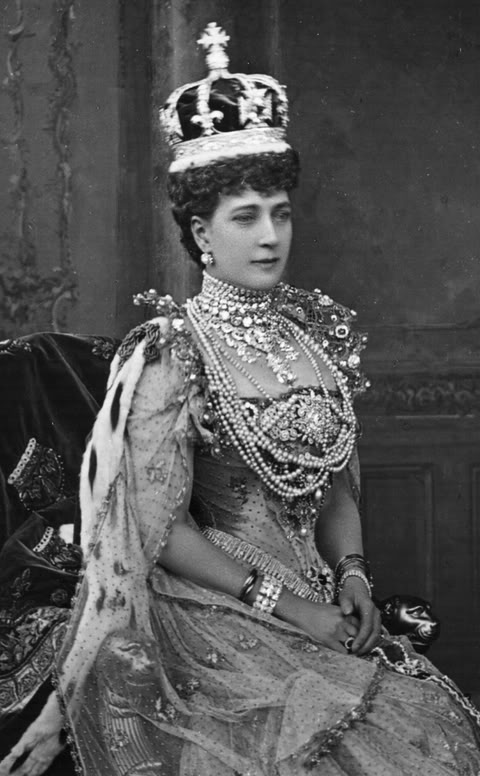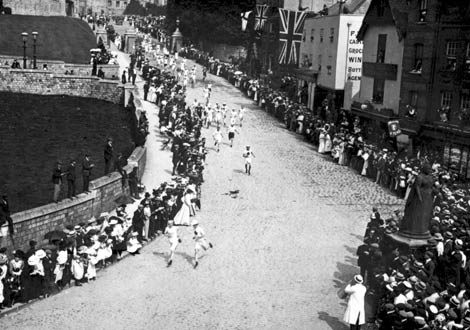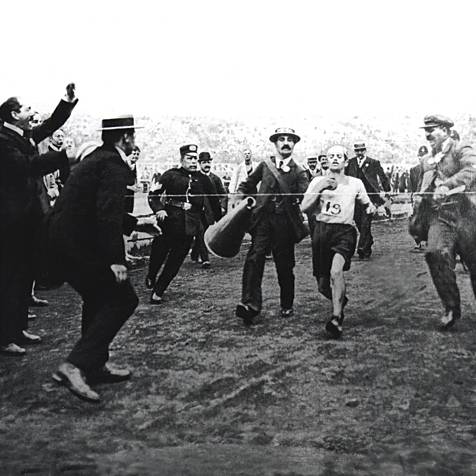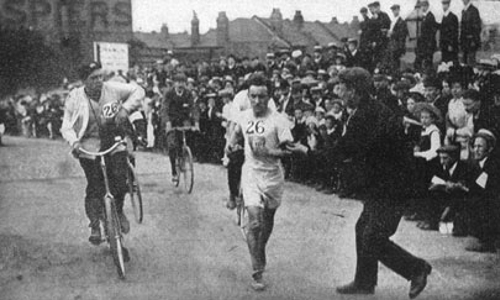Is the Current Distance of the Olympic Marathon Really Based on Where Queen Alexandra Sat at the 1908 Olympics?
Here is the latest in a series of examinations into urban legends about the Olympics and Olympians and whether they are true or false. Click here to view an archive of the Olympic urban legends featured so far.
OLYMPIC URBAN LEGEND: The current distance for the Olympic marathon was based on where Queen Alexandra was sitting at the 1908 Summer Olympics.
While over the years it has been passed in popularity by sports like gymnastics and basketball, the marathon used to be one of the marquee events of the Summer Olympics. Its past popularity gave rise to a tradition that is still done at the Summer Olympics to this day, which is to have the marathon as the last event of the games, with the finishing point of the marathon being in the main stadium for that year’s games. Sometimes the finish is even worked into the closing ceremonies! This tradition is what appears to have led (indirectly) to the current distance of the Olympic marathon, with a little help from the British Royal Family, as well.
The marathon race gets its name from the legend of the Greek messenger, Pheidippides, who, in 490 BC, ran from the city of Marathon all the way to Athens to deliver the message that the Greeks were victorious against the Persians in the Battle of Marathon. Whether it happened or not, the legend was cemented into popular folklore, especially in the late 19th Century when the famed poet Robert Browning wrote a poem about the journey (which ended with Pheidippides collapsing dead after delivering his message). Due to Mount Penteli standing between the two cities, there are two routes from Marathon to Athens, a shorter one with a very difficult climb that goes to the north of the mountain and a longer one that is, however, on flat land to the south of the mountain. The second route is typically what most folks presume that Pheidippides used on his journey, and that distance is roughly 26 miles.
So from the beginning of the Modern Olympics in 1896, 26 miles was the basic length of the marathon. A specific length, however, was not determined, mostly because the main object of the race is to force everyone to run a really long distance, and whether you run 25 miles, 25 and 1/2 miles or 26 miles, the end result is that you ran a really long distance, and so long as everyone is running the same distance, the goal of the race is achieved.
In fact, from the first Modern Olympics through 1920, a span of seven Olympics, a total of SIX different distances were used in the marathon! In 1896 and 1904, the distance was 24.85 miles, in 1900 25.02 miles, in 1906 26.01 miles, 1908 26.22 miles, 1912 24.98 miles and in 1920, 26.56 miles.
In 1921, the International Association of Athletics Federations (IAAF) decided to settle on an official distance for the marathon, and ever since then, the 1908 distance of 26.22 miles (or more specifically, 26 miles and 385 yards) has been the official distance for the marathon in all competitions, including the Summer Olympics.
But why 26 miles and 385 yards?
It all began when planning began for the 1908 Summer Olympics in London, England. The planning had to be done on very short notice, as Rome backed out of hosting the 1908 Games in 1906. A giant stadium, dubbed The Great Stadium, was built in Shepherd’s Bush in London for the Games. It was here that the marathon would end. A novel idea for the start of the race was determined – the race would begin at Windsor Castle in Berkshire County, England. Plans for the race route were announced in 1907. The race would run roughly 25 miles long. However, the planning committee encountered protests about the original route, especially because of tram-lines on the journey. So the plans were slightly altered and with the changes, the race length was extended. It ultimately ended up at 26 miles, plus a lap within The Great Stadium itself (the lap being roughly 700 yards), with the finish line being directly in front of the Royal Box, where Queen Alexandra herself would be sitting.

That was the plan, but due to some issues with the entrance to the stadium (the original entrance turned out not to be accessible to the track within the stadium), things had to change once again. An alternate route was designed that managed to keep the outer route still 26 miles. However, one thing that “had” to remain a constant was that the race had to end in front of the Royal Box. This was impossible under the current route, so rather than doing a full lap within the Stadium, the racers would run the other direction and once again end up in front of the Royal Box. This distance worked out to 385 yards.

The 1908 Olympic marathon turned out to be one of the most famous marathons ever. The weather was nearly 80 degrees, so the racers were running in some pretty rough conditions. The conditions likely affected the leader of the race, Italian Dorando Pietri, who was in bad shape when he entered the Stadium well ahead of his closest competitor. However, while he was in the lead, he could barely walk. He staggered and fell numerous times as he grew so close to the finish line. Once or twice he even began to start running the wrong direction, that’s how dazed he was! Ultimately, with the other runners starting to come close and with Pietri so tantalizingly close to the end, Olympic officials actually decided to PROP HIM UP across the finish line!

Naturally, the United States protested this when their representative, John Hayes, crossed the finishing line next, and their protest was upheld. Pietri was disqualified and Hayes was the Gold Medalist.

As you might imagine, this whole sequence was quite a dramatic scene – and it all happened directly in front of the Queen of England! Queen Alexandra was so moved by Pietri’s situation, particularly the fact that he had not asked for assistance, that the next day she personally awarded him a special silver-gilt cup.
Both Pietri and Hayes became professional runners after the Olympics, and had many re-matchs. And naturally, the re-matchs had to be the same length as their famous race. Marathon fever hit England, and the next year the famous Polytechnic Marathon began in London. That race, naturally, ALSO used the same distance as the previous year’s Olympic Marathon in London. So from a strict “fame” standpoint, the distance of 26 miles, 385 yards had its support well established. And while the IAAF never expressly said why they chose 26 miles, 385 yards as the official distance, it cannot be a coincidence that they chose the exact length of the most famous marathon in Olympic history (at that point, at least) and that length was because of need for the race to end in front of the Queen of England. And over 100 years later, her seating arrangements still dictate the distance of marathons the world over!
Ian at the neat site, Sporting Landmarks, has an extensive and interesting look at the 1908 marathon here.
The legend is…
STATUS: True
Feel free (heck, I implore you!) to write in with your suggestions for future installments! My e-mail address is bcronin@legendsrevealed.com.






One other interesting tidbit about the 1908 Olympic marathon: One of the officials involved was Arthur Conan Doyle, the writer of the “Sherlock Holmes” stories!
The Pietri sequence was used as inspiration for the British runner in the movie The Games (also starring Ryan O’Neal!) – and was nearly duplicated in the 1984 Women’s Marathon when Gabrielle Andersen-Scheiss of Switzerland stumbled to the finish and waved off race officials until she collapsed at the finish line.